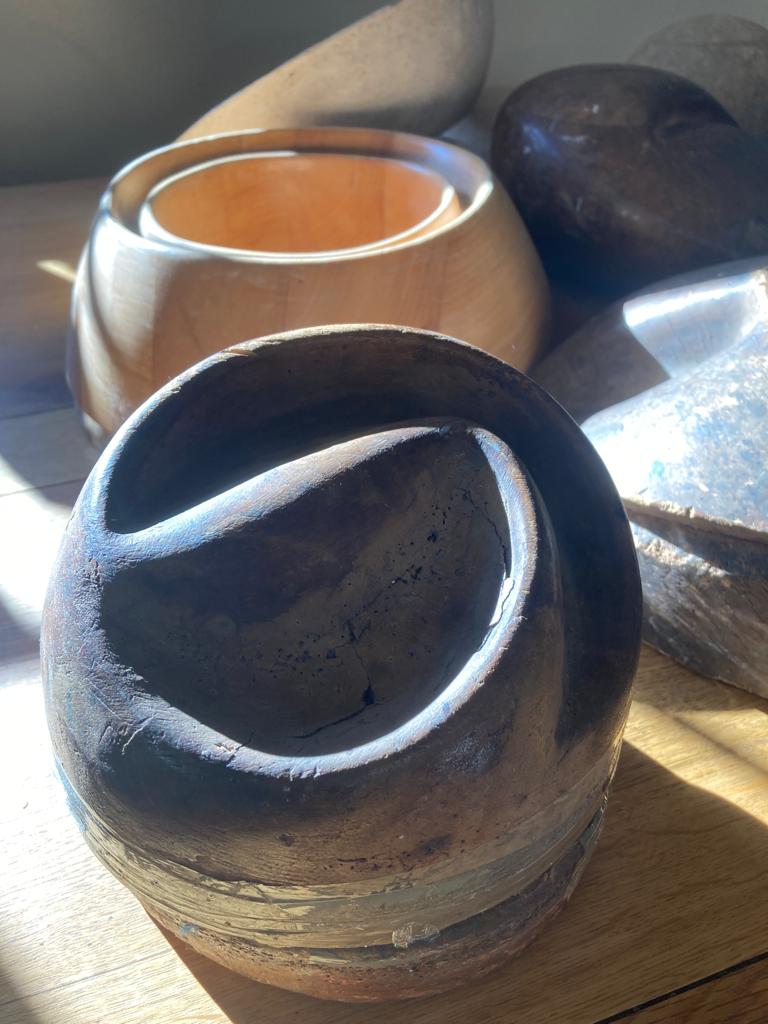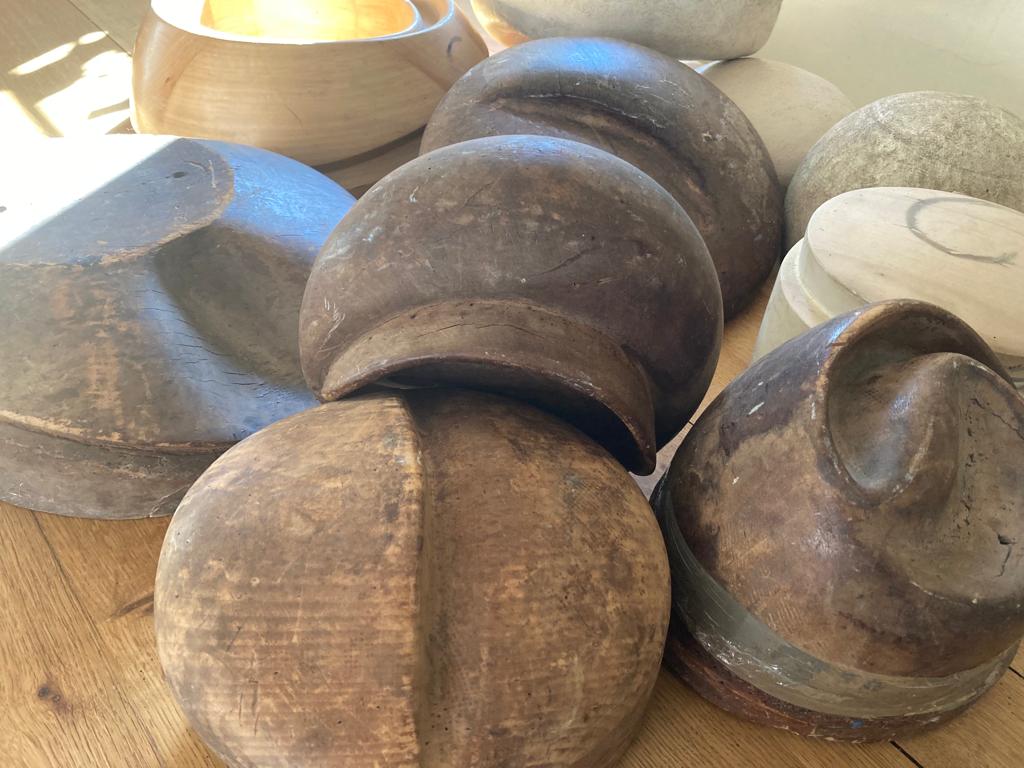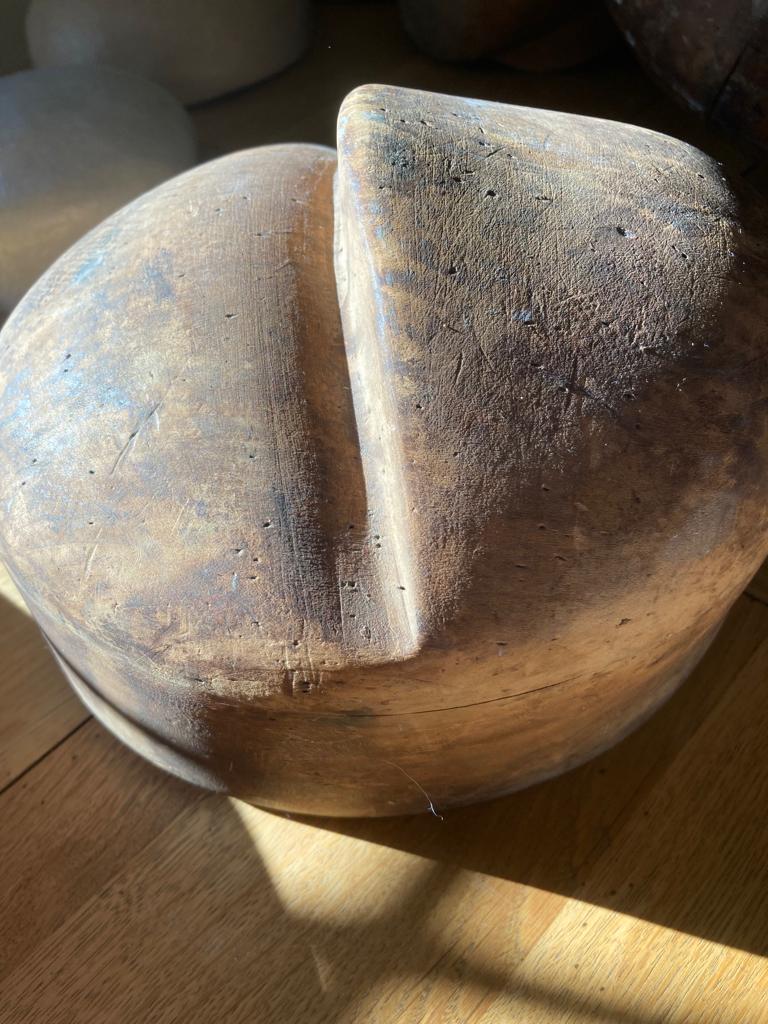ethical policy. procurement. sustainability
millinery is a centuries old craft
that has always been about handwork. The hat industry has a poor reputation in the past because of the unhealthy conditions for workers, cruelty to animals and pollution.
Gone are the days when milliners got high on glue and contributed to the exploitation of rare birds.
As an independent milliner Lai takes a conscious approach to the environment when making her hats. The core of her work is about making a one-of-a-kind beautiful object that will last. It is ‘slow fashion’ as opposed to ‘fast fashion’ and she makes a limited number of hats each year.
Each hat comes with a provenance label so that the customer knows exactly where all the materials that have gone into the making of the hat come from. Lai does not overstock. A selection of hats is available in her workroom to buy or try on but most work is made to order which minimises waste.

the basic materials used in the making of a couture hat are natural in their essence
Wool, feathers, plant fibres, silk etc. The reason that this continues to this day is because natural fibres can be manipulated and hold their shape in a way that synthetic fibre cannot. Natural fibre is also breathable and, in the case of wool, warm; qualities important in hat making.
further reading
High volumes of carbon monoxide are released during the production of synthetic materials which themselves are generally non-biodegradable. For this reason, natural materials are thought to be a better choice, even though pesticides and high volumes of water are used in the production. The quality of these materials together with skilled traditional couturier craftsmanship means that a Lai Symes couture hat will last you a lifetime. By buying one of her hats you will also be helping to keep the art of couturier millinery alive.
Lai personally undertakes to look after your bespoke hat and freshen it up if ever necessary and at no additional cost. This ensures the legacy of the hat and reduces waste.
As well as priding itself on using the highest quality materials there has always, partly because large amounts are not needed, been a tradition in millinery of making use of what is available be that working with the off cuts from clothing or other scraps and trimmings otherwise thrown away. Indeed, savvy ladies throughout time have prided themselves on choosing clever milliners who could reinvent their old hats for them. This continues to this day and Lai is always happy to work on a customer’s existing hats so that they can be up-cycled and continue to be worn.
In the tradition of couture millinery very little is thrown away meaning virtually zero waste. Excess straw or felt from blocking shapes is kept to be used in trimmings and flower making and every tiny feather or piece of leather or trimming detail is stored for use another day as part of a design. Many trimmings and straws come from vintage stocks or stores.
fabrics and materials
As much as possible Lai supports local or UK businesses to lessen the environmental impact of shipping. However, many materials used in the making of hats are manufactured around the globe. Other materials come from vintage stocks she has acquired or sourced such as the fine parabuntal straw which is no longer in production.
peachbloom / velour felt
This is a luxuriously soft premium felt with a short pile velvet finish usually made from rabbit hair. The rabbit hair used to make the felt is a by-product of the food industry. The best felts are manufactured in the Czech Republic. Wherever possible Lai sources these felts from suppliers in the UK.
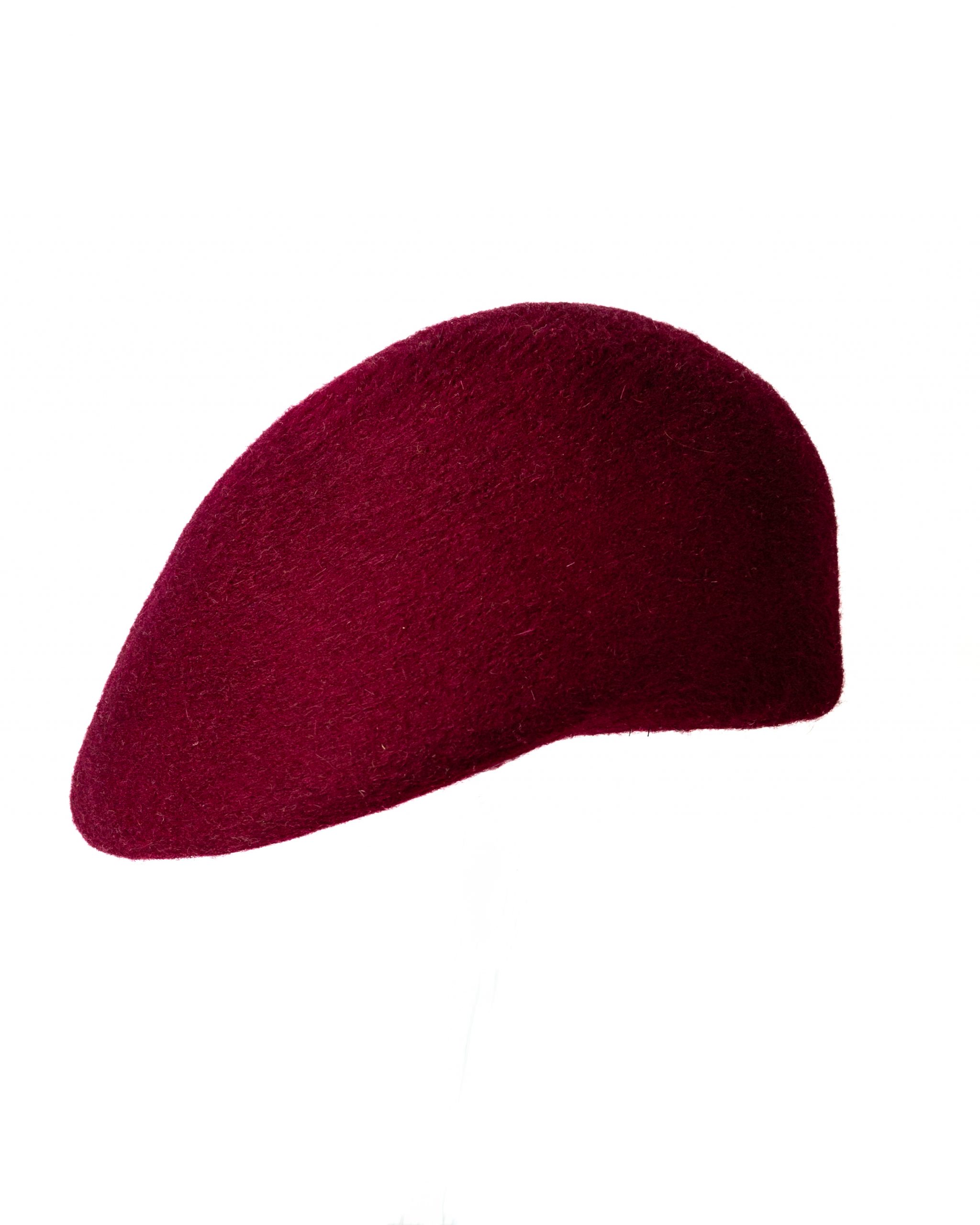
sinamay straw
A straw weave fabric made from abaca which is a plant similar to the banana plant. Sinamay for hat making is only grown in the Philippines. The fibre is woven in the Philippines by hand on bamboo looms and exported globally.
Lai buys her straw from a UK supplier who, unique in the industry, works directly with families and plantation owners and does not use intermediaries. Because of this, they know exactly where the fibre has come from and who has woven it (probably by name)!. Payment for the product goes straight back into the weaving community. Lai buys this straw in bulk which reduces shipping and cost.
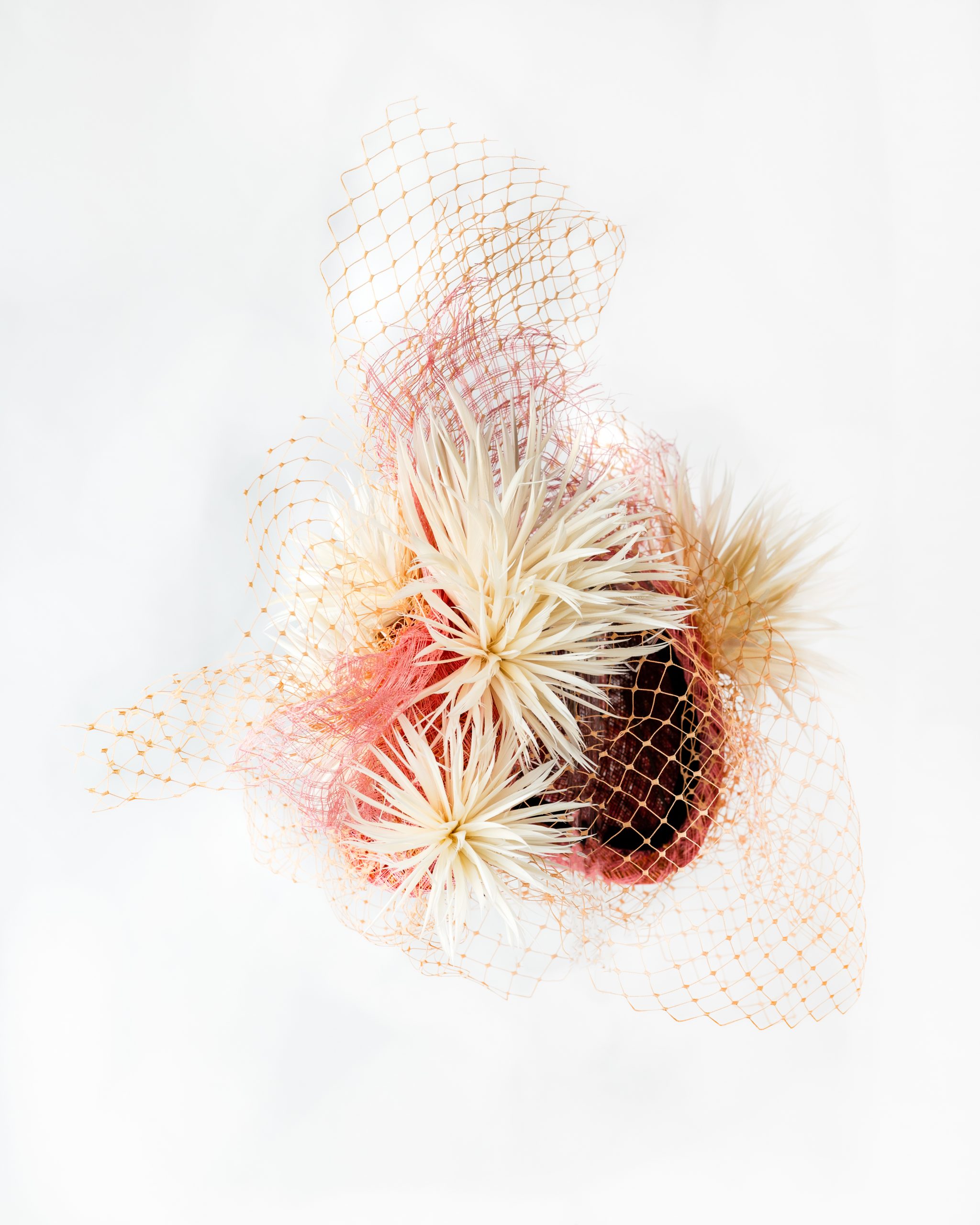
Parisisal straw
A high grade natural straw woven from the fibres of the sisal plant. It is used in couture millinery because of its high quality and smooth weave. The majority of straw is woven in China. The Philippines also manufactures straw hoods as well as supplying china with manila hemp which is the base material for most straw hood weaving. Almost without exception straw is plaited or woven by hand.
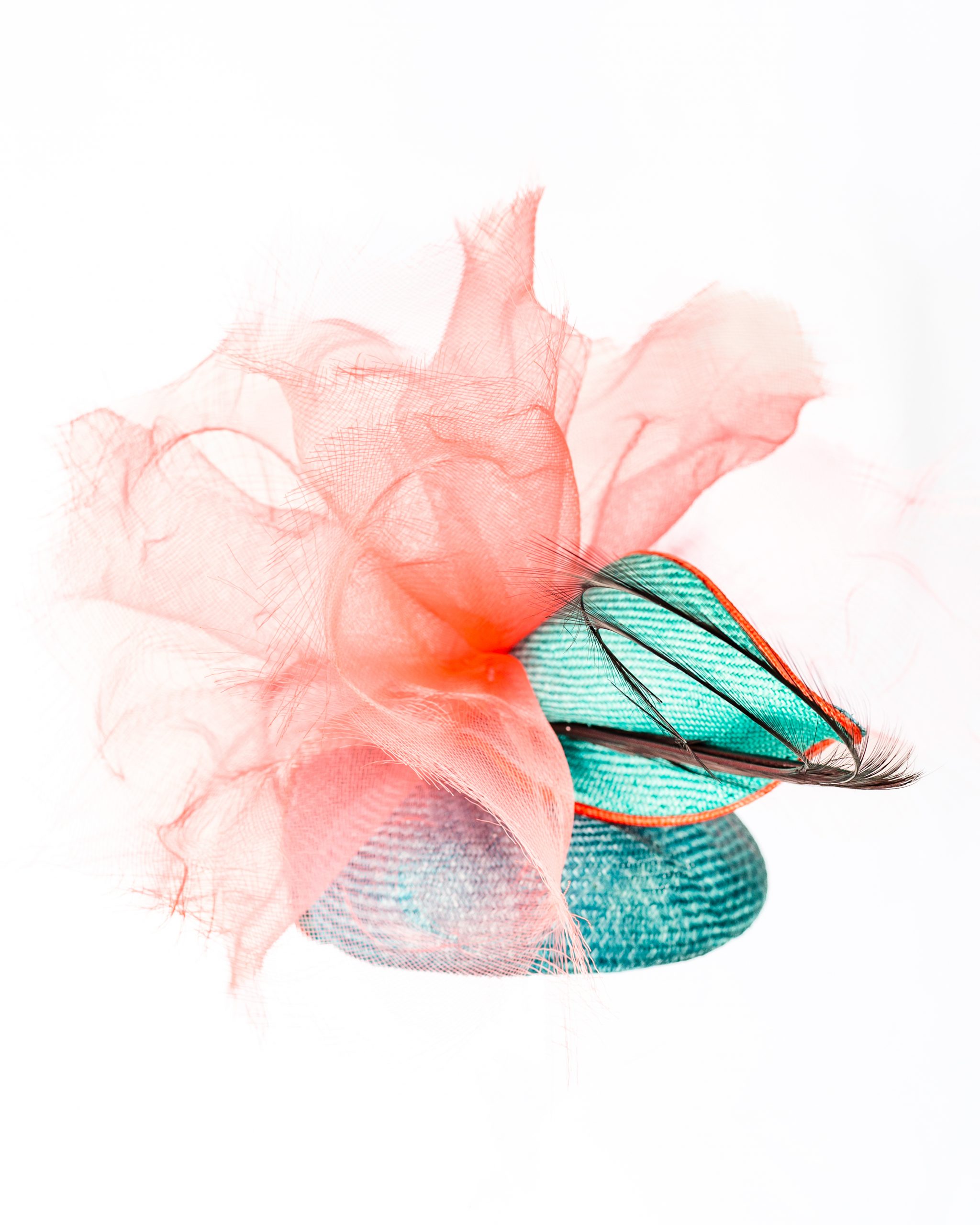
panama straw
A natural hand woven straw made in Ecuador. The supplier Lai uses takes a keen interest in the welfare of the weavers in Ecuador to ensure they receive a fair price and was awarded the World Vision award for Development.
feathers
As many different types of feathers are used in trimmings, specific provenance labels can be supplied with each hat. China is the biggest supplier of feathers.
Lai takes care that the feathers she uses for trimming hats are farmed sustainably. The feathers are imported by a company in Axminster with vet’s certificates and are then washed, processed and dyed in their UK factory.
Other feathers such as Ostrich Spadone are imported as raw material from South Africa where the birds are sustainably farmed in Klein Karoo. These days the birds are farmed for the meat and leather and the feather is the by-product unlike in the hat hey day when they were farmed specifically for their feathers. It is illegal to take feathers from the wild bird. The feathers are washed and sterilised in the UK.
Lai also uses feathers she is given or has collected on her father-in-law’s Suffolk farm.
SILKS
The most commonly used silk is silk organza as it is light and versatile, makes beautiful flowers and is easily dyed. The main silk producing countries are China and India. However, silk is also important in Brazil, North Korea, Thailand and Vietnam amongst others.
Lai buys her organza from a company in Leeds which procures Fairtrade silk. They state that “the silks of the weavers have been developed over generations. The working conditions are clean and fair”.
STIFFENING
The main agent used to stiffen the hats is PVA, a synthetic polymer manufactured from products generated by the petro chemical industry. Biodegradable and nontoxic to humans, it is regarded as an environmentally friendly alternative to chemical stiffeners which Lai uses as little as possible. Lai repeat uses her PVA mixtures sharing the glue with hat bodies of similar colours in order to avoid waste.
.
FABRICS
Many of the fabrics and haberdashery are sourced locally supporting local and UK based businesses.
Lai re-cycles high quality fabrics from old clothes or specific pieces which have an emotional meaning for the customer can be the basis of making a hat.
Lai only uses ‘faux fur’ unless she is re-working an existing vintage real fur garment to continue its life as a hat.
DYES
Lai uses water based dyes and as little water and dye as possible. No commercial dyeing is done and fabric and feathers are dyed as needed in small quantities.
Because Lai is an expert at making colour and now has nearly 20 years of experimenting notes and swatches on all different materials, very little dye is wasted in the colour matching process.
WOODEN HAT BLOCKS
These are the wooden moulds or shapes that the materials are shaped over to give form to the hat. As well as making her own shapes out of canvass and buckrum and using vintage hat blocks sourced over the years, Lai has blocks made for her by Boon and Lane of Luton. These blocks are made of cherry wood which is sustainable. They are used repeatedly and last forever. They are also beautiful objects in their own right.
HAT BOXES
Lai sources her hatboxes from a company which uses 100% recyclable material and are made from acid free cardboard.
